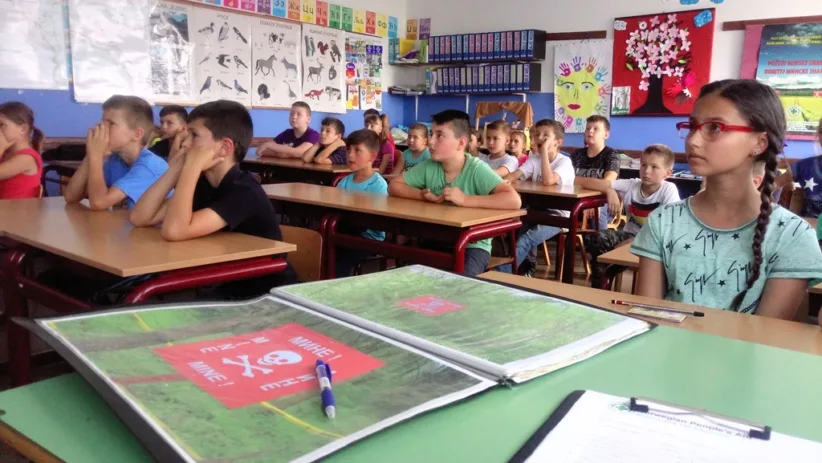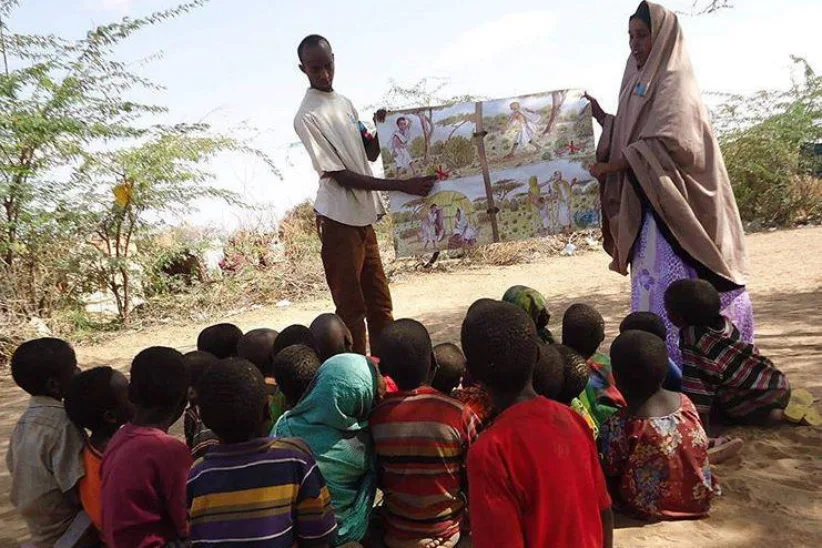NPA conducts Explosive Ordnance Risk Education in mine-affected communities so that people can stay safe until land has been cleared.
Clearing landmines, cluster bombs and other explosive weapons from former battlefields is a time consuming task requiring substantial funding and effort. While clearing can takes years if not decades the population – both those who stayed throughout the conflict and those who return from having sought refuge elsewhere – will restart their lives as soon as possible after the last shot has been fired.
Thus, in addition to clearance NPA conducts Explosive Ordnance Risk Education (EORE) in communities affected by explosive hazards. Providing EORE will allow people to live and work as safely as possible in the face of explosive weapons and will work to uncover what circumstances cause or force people to engage with explosive hazards and how to mitigate this behavior.
EORE is done through close interaction with the exposed population. Education and information campaigns form the basis of our work. The goal is to teach local communities how to avoid, recognise and report explosive threats in their surroundings and to obtain information on the location and nature of the threat in the community which will assist the national authorities to respond to the threat.
Knowledge and safe behavior save lives!

We do community liaison and tailor educational messages according to age, gender, occupation and cultural and individual context. Nearly 9 out of 10 victims of explosive weapons in the aftermath of conflicts are boys and men, and certain occupational groups are more at risk, such as shepherds and construction workers. EORE is especially important for children, who are often completely unaware and attracted to curious shapes and colours, which can be lethal when a cluster bomb may look like a ball. Another important target group is refugees returning to their home in the aftermath of a conflict having little or no information on the scope and type of explosive hazard but with a strong urge to rebuild their homes and cultivate their land.
Our aim is to minimise the number of accidents by making people aware and provide them with the tools to identify and avoid the threat recognizing that the threat will remain for years in the future. This is how we save lives and limbs.
We teach local communities
- How to recognise landmines, cluster munition remnants and other explosive weapons
- Which areas contain explosive threats and what to look for to be able to avoid them
- Who to contact if they come across a dangerous object
- What to do in an emergency

